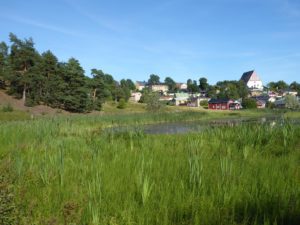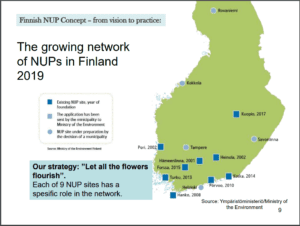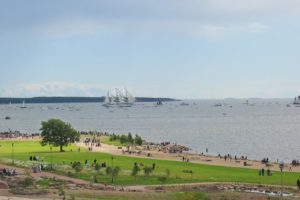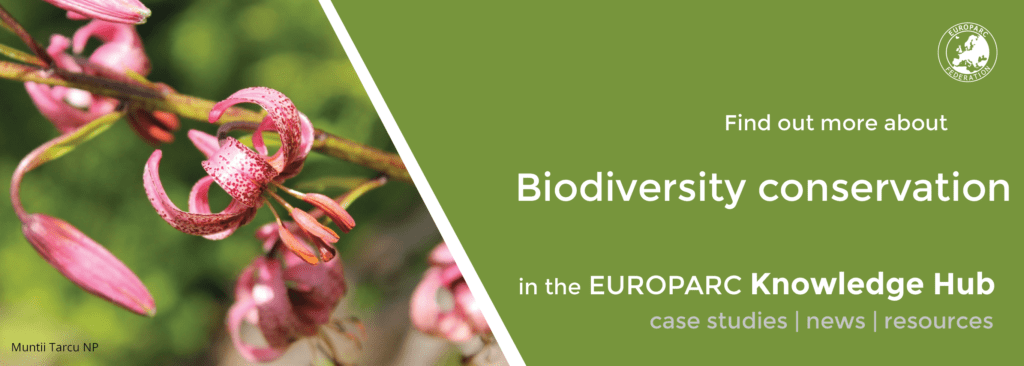Case study: Promoting biodiversity in urban areas
The Finnish concept of National Urban Parks (NUP) is promoting biodiversity in urban areas.
Urbanisation is a mega trend all over the world. Living in an urban environment offers benefits for residents such as more employment opportunities and higher incomes, and for businesses lower input costs or greater opportunities for cooperation and innovation. But this rapid urbanization has many negative effects, a decline in biodiversity due to habitat loss and fragmentation being one of them. The Finnish concept of National Urban Parks (NUP) is promoting biodiversity in urban areas.
The foundation of the first national city park in Sweden 1995 has raised the debate in Finland on how to build cities in a more sustainable way, protecting nature and green spaces. The Ministry of the Environment in Finland has identified several problems in the context of urban areas:
- Urban structure dominates urban planning instead of ecology
- Building causes irreversible changes in urban natural and cultural heritage and identity of cities
- Urban sea and lake bays as well as wetlands are being filled and built, thus changing the shorelines, reducing biodiversity and blocking the views and access of people
- Most people want to live in an urban environment that has easy access to a green area.
As a result the Finnish National Urban Park (NUP) concept, a tool for promoting sustainable urban planning was implemented. The concept was taken as part of the Land Use and Building Act, which came into force on 1.1.2000.

Porvoo national urban park
National urban parks as part of the Finnish biodiversity strategy
National Urban Parks (NUPs) were created as a tool and method to promote biodiversity. National urban parks are not conventional protected areas, but rather aim to ensure a continuum from natural habitats to heavily modified parks by setting limitations to urban planning.
They include areas that are important for the conservation of biodiversity in urban environments. The green infrastructure within an urban park must be extensive and undisturbed, creating ecological corridors that encourage species to migrate. Ecological corridors must continue to lead uniformly from the center to the outskirts of towns, to the natural areas or to the countryside.
Urban parks and nature areas on the outskirts of cities are often particularly species-rich habitats.
The first Finnish National Urban park was established in 2001 in Hämeenlinna and now Finland has a network of 9 NUPs. All NUPs in Finland have one or more protected areas, Natura 2000 sites, old growth forests or even marine, lake and river ecosystems.

Finnish National Urban Parks
The main principles of the Law
- Preparation: The municipality applies, and the Ministry of the Environment decides.
- Ownership: Landowners in NUP can be municipalities, state, public entities and private.
- Protection: By land use plans and different Acts
- Management plan: The values of a NUP are managed by a management plan drawn up by the municipality and approved by Ministry of the Environment.

Kotka national Urban park
Challenges
They were faced with different challenges during the stages of applying and managing National Urban Parks.
At first, it was difficult to get all municipal politicians to get to understand that the protection of natural- and cultural heritage is, in fact, the essential tool for the sustainable development of the city. For some cities, the preparatory process (5-10 years) took too long. During that period, the city’s political decision makers might have changed, and the new ones were not committed to preparatory work and goals.
Lessons learnt
The preparation and decision-making process according to the “bottom-up” approach, the application of the “Let all flowers bloom” strategy and the technical criteria chosen to complement the legislation were rated as good and successful.
For municipal decision-makers and residents, it is a learning process about the importance of urban nature and the need to integrate ecological considerations into urban planning.
Indirect economic benefits from the new status, for example in the tourism sector, require long-term marketing.
Participatory planning involving municipalities and regional authorities, local residents and NGOs was essential in the various phases of application and management of the National Urban Park.
Read the original case study on Finnish National Urban Parks: a tool for promoting biodiversity in urban areas. And find further information about NUPs here.
